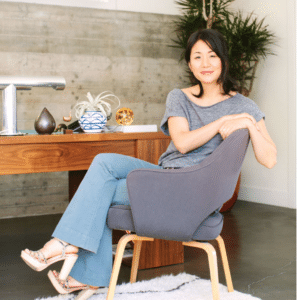
Dorothy Kowal
Critical Race Theory has quickly become the straw man in the debate over anything related to diversity, inclusion, equity and social justice in classroom curriculum across the country. As a Diversity, Equity, and Inclusion Director, part of my role requires that I promote and model positive feedback culture, and I pride myself in being open to most debates. But the problem with the debate over CRT is that most people on both sides of the argument are not holistically informed, and do not agree on its definition, particularly as it relates to how “it” shows up in K-12 education.
I’m not going to waste your time with yet another blog post arguing the “correct” definition of CRT or my belief that it is a real and important part of understanding our nation’s systems and structures. But I encourage you to do your own research from multiple sources so you can contribute in positive ways to the debate.
No, this post is about the other CRT, Culturally Responsive Teaching, the pedagogical mindset that can provide focus and direction towards fostering a classroom environment that is accessible across differences, and invites diversity of thought and narrative that is inclusive and reflective. Instead of debating the theoretical, let’s take a moment together to talk real shop.
Zaretta Hammond’s Culturally Responsive Teaching model offers practice areas in a framework of four areas: Awareness, Learning Partnerships, Information Processing, and Community Building. In this article I give examples from my own work in a 9-12 school that illustrate these areas of practice and share my own reflections. To all the debaters out there, I hope we can agree that in order for students to learn, they must feel safe to be their authentic selves. I am grateful that Zaretta Hammond has offered a clear way to approach this goal, as it has served me and my students tremendously.
Practice Area 1: Awareness
Part of teaching classes specific to issues of social justice means heavy personal prep to ensure I’ve done my due diligence in assessing my privilege, power, biases, and blindspots based on my identity as a first generation Korean American woman. A helpful resource that guided my journey of self-identity reflection is A Summer Workbook for Educators created by consultant and coach Tamisha Williams. In this workbook I was able to reflect on the cultural and sociopolitical aspects of my life’s experiences and how they affect how I see myself and others, including my students. This awareness has aided me in reflection after difficult and painful racialized moments in the classroom.
Practice Area 2: Learning Partnerships
Building trust and connection with students whom I perceive to be “different” from myself or “different from the majority,” has always been the core of my practice. I always begin any group formation practice with norms or class agreements that are created in partnership with the students. This practice sets a powerful foundation of group trust and accountability from the start and sets a tone of respect and mutual engagement. In some of my classes we call them Brave Space Agreements, and in others we use the acronym R.O.P.E.S.: Rules Oriented Positive Engagement Strategies.
Examples of agreements:
- Stay engaged
- Speak from the I perspective
- Remember everyone has a right to start somewhere and grow
- Listen deeply
- Be conscious of power and privilege dynamics in the room.
Hammond identifies rapport and alliance as central to a learning partnership with students, which rests in relationships built upon trust. She goes further to say that trust begins with listening. A set of cues for active listening that I use to remind myself of what listening looks like include the following:
- Paying attention
- Withholding judgment
- Reflecting
- Clarifying
- Summarizing
- Sharing (if appropriate and relevant)
Depending on where I’m teaching, I try to have these cues visible for students as well so they can utilize them too.
Practice Area 3: Information Processing
Hammond speaks of the concept of the “warm demander” which is a call to strike an important balance, one that rejects the “deficit mentality” that is all too common when we consider the abilities of an individual with an “outsider” or “other” identity. If you’re not sure what “deficit mentality” is, it’s the idea that certain identities come with inherent deficits, due to factors out of or within their control. We must step out of these modes of thinking and provide appropriate challenges to our students to exercise their learning muscles and grow as learners. I have noticed in my practice, that intentional and authentic information processing opportunities show up mainly in two forms:
- Discussion (within the boundaries of R.O.P.E.S.)
- Sharing stories
Because most of my classes have a goal of building empathy, talking through and verbalizing relevant experiences as related to our class content has served to build the learning into the marrow of the class’s communal and personal bones.
Practice 4: Community Building
Community building is core to empowering our students to learn and be actively engaged in their education. Intentional ways to build community in the classroom include the curation of the physical space (ex: what books are on the shelves, what imagery is on the walls and how does it connect to the content in meaningful ways, how accessible are different areas of the space) as well as the culture of communication, particularly feedback. The following questions help me assess for an empowering culture from the perspective of the students. In the spirit of empowerment, I ask my students in an anonymous survey at the end of the course these questions as their final exit ticket:
In this class…
- Did you feel like your thoughts, opinions, preferences and comments were respected and valued by the group? Yes/No, Please explain.
- Were you prompted to think about ideas, history, news from a different perspective? If you answered “yes,” please give an example. If you answered “No,” please say more.
- Did you have opportunities to practice active listening? Yes/No
- Did you feel comfortable voicing the opinion when you were in the minority or had an alternate view than the majority of the class? Yes/No. If you answered “No” please say more.
- Did you feel that the group tended to uphold the group agreements/R.O.P.E.S.? Yes/No. If you answered “No” please say more.
- I connected with the content of the class and I was offered opportunities to process the information. Yes/No. If you answered “No” please say more
- Anything else you’d like to share about your experience in this class?
For those of us who are trying to create culturally responsive classrooms, the work is not merely about representation and content, it’s about understanding our own identities so we can build authentic relationships. These relationships will be the rudders that direct the learning and building of community in our student groups so they can grow to be critical thinkers, avid learners, and be able to engage in discourse that is meaningful with respect and care, something that seems missing when I open my news apps or scroll through social media. Perhaps we can start to consider Culturally Responsive Teaching as a model for engaging with politicized topics like, you guessed it, the other CRT.
Kiddom seamlessly connects the most critical aspects of teaching and learning on one platform.
For the first time, educators can share and manage digital curriculum, differentiate instruction, and assess student work in one place. Learners can take assessments online, see student performance data with the click of a button, and teachers have the insight and tools they need to create individual learning paths.
Ready to bring digital curriculum to your school or district?
Connect with us in a 15-minute meeting to learn more about available pre-packaged curriculum, and how the Kiddom education platform can support your learning community.
